 Physics
Physics
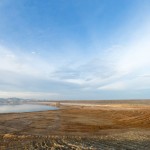
KQED Science
El Niño Fizzle: No Relief Likely for California Drought
Odds of a strong pattern of warm Pacific waters forming in time to bring winter rains are diminishing.

KQED Science
Fukushima Radiation: None Detected Yet on California Coast
Radiation from the Fukushima nuclear power plant in Japan has not reached the California coastline. Scientists monitoring kelp forests on the West Coast announced their results on Wednesday.
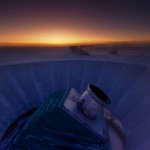
KQED Science
This Week’s Cosmic Inflation Discovery: Five Big Questions Answered
Chances are you read a headline about the Big Bang earlier this week. Perhaps you clicked to an article about it and started reading up. But you may still have some burning what-is-this-Big-Bang-news-anyway questions.

KQED Science
Stanford Scientists Celebrate Evidence of Universe’s Early Growth
In one of the first tiny fractions of an instant after the Big Bang, the Universe expanded explosively, faster than the speed of light. That exponential expansion of, well, everything, is described by the theory of inflation, which may now be confirmed.

KQED Science
One Step Closer to Nuclear Fusion Reactions
Physicists at Lawrence Livermore National Lab's National Ignition Facility said they've taken a significant step toward achieving nuclear fusion ignition.
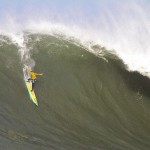
KQED Science
Mavericks Surf Competition Is Friday; How and Where to Watch
Tens of thousands of people are expected to descend on Half Moon Bay to watch the big wave surf contest, but the beach and cliffs are off-limits to spectators. If you want to watch the competition, your options are on TV, online or at a festival near the beach.

KQED Science
Stunning Fish Skeletons Serve Science and Art
Cleared and stained skeletons are strikingly beautiful. But not many people outside the lab would ever know it—until now. "Cleared" is an exhibit of stained fish skeletons currently on display at the Seattle Aquarium, prepared and photographed by Adam P. Summers. Recently, Summers and his colleagues used a cleared and stained manta ray to discover how these curiously flat fish filter food out of the water.
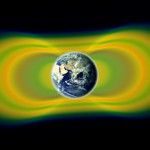
KQED Science
Our Ten Favorite Science Sounds of 2013
From whales and elephant seals to brain music and killer electrons, our best sounds of the year.

KQED Science
Our Top Science Stories from 2013
From the debut of the world's largest solar plant to Comet ISON, zombified bees to the physics of sailing — it's been another year of diverse storytelling from the KQED Science team. Here's a round-up of our top 10 stories (based on page views) that you've enjoyed in 2013.

KQED Science
Why Does a Curveball Curve?
With the World Series in full swing, most Americans would probably say they know the basic rules of baseball: the pitcher throws it, the batter hits it, three strikes and you’re out. But underneath it all, the rules that truly govern this game are the laws of physics. “When you go to a ballgame you’re […]

KQED Science
What Makes ‘Sneaker Waves’ so Sneaky — and Dangerous
These insidious waves often seem to come out of nowhere and claim lives -- even on calm, sunny days. But how?
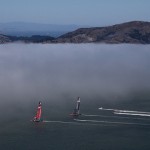
KQED Science
How Do These Boats Sail Faster Than the Wind?
It isn’t magic; it’s just physics. And it’s an idea as simple as rocket science, which in this case really breaks down to what you learned from riding a bike.

KQED Science
Stanford X-Rays Bring a 200-Year-Old Opera Back to Life
According to legend, Cherubini's 18th-century opera Medea dragged on a bit. Maybe that's why Cherubini, or someone, used charcoal to scratch out a page and a half of the score.

KQED Science
Sizing Up Tsunamis By Their Sound Waves
Scientists at Stanford may have found a way to build a better warning system for tsunamis. The key is listening for the earthquake's sonic signature.

KQED Science
Can’t Pop This: Bubble Scientists Reveal the Physics of Soap
Why do bubbles pop? And what happens when they do? UC Berkeley scientists have cracked the bubble cluster code.
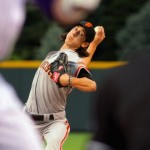
News Fix
How Can Anyone Hit a 90 MPH Fastball? Science Explains!
Hitting a home run seems impossible. A fastball takes .4 seconds to go from the pitcher's hand to home plate, and a hitter needs a full .25 seconds to see the ball and react. So how does anyone do it? Researchers at UC Berkeley have identified an area of the brain that makes it possible.

QUEST
The State of the Universe: Matter and Age Up, Dark Energy Down
Smile, universe, for your baby picture! Maps of the early universe by the COBE, WMAP, and Planck missions. Image credit: NASA On news that the universe may be 100 million years older than previously estimated, cosmological markets have seen a reduction in the benchmark of ...
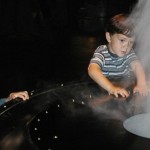
QUEST
Exploratorium’s Science with Spirit Transcends Place
Blowing Smoke, an exhibit at the Exploratorium designed by artist Ned Kahn for the Turbulent Landscapes Exhibition. (Photo: D'Arcy Norman/Calgary, Canada) Legend has it that opening day for the late physicist Frank Oppenheimer’s “San Francisco Project” happened by accident. As told by the Chronicle’s ...
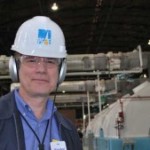
QUEST
What's Next for Nuclear?
Despite the accident last year at a nuclear plant in Fukushima, Japan, here in the United States, some policymakers – including President Obama – are pushing to expand nuclear energy as a source of abundant carbon-free electricity. “To meet our growing energy needs and prevent the worst consequences of climate change, ...
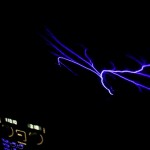
QUEST
"I Flamed Amazement": The Physics of St. Elmo's Fire
St. Elmo's Fire on a cockpit window, by Fly For Fun[/add_caption_link]. Clad in a bright yellow raincoat and a crown of butterflies, laughing and singing, Ariel delighted the audience from the first moments of California Shakespeare Theater's "The Tempest."






